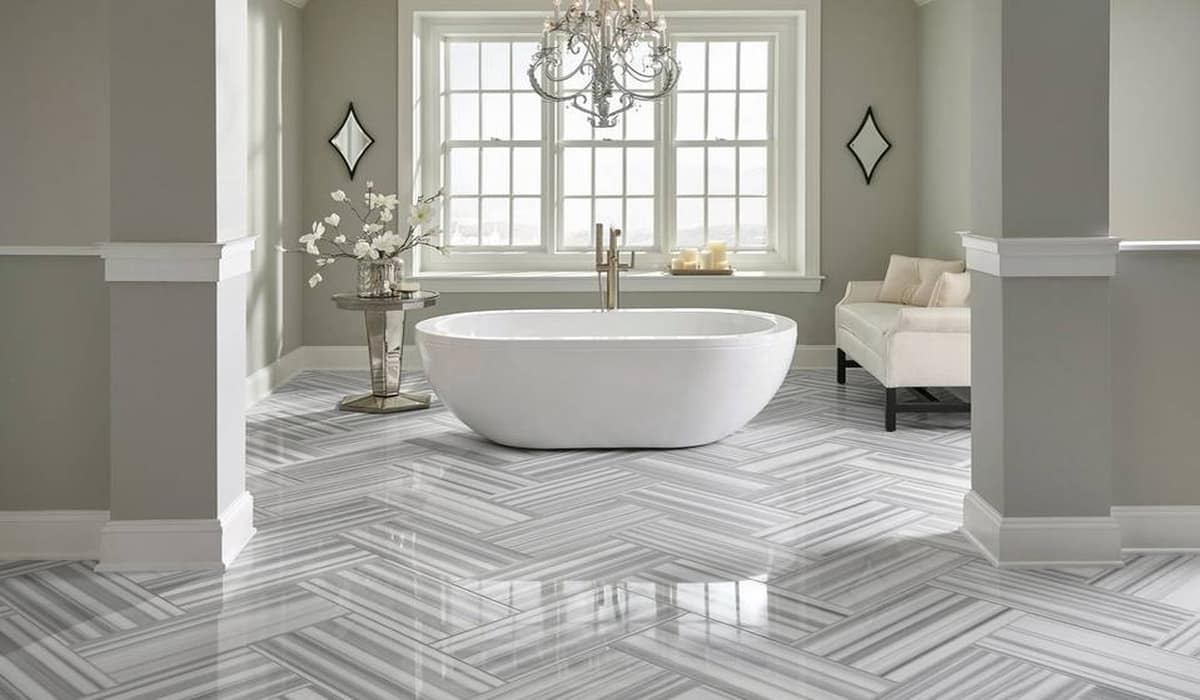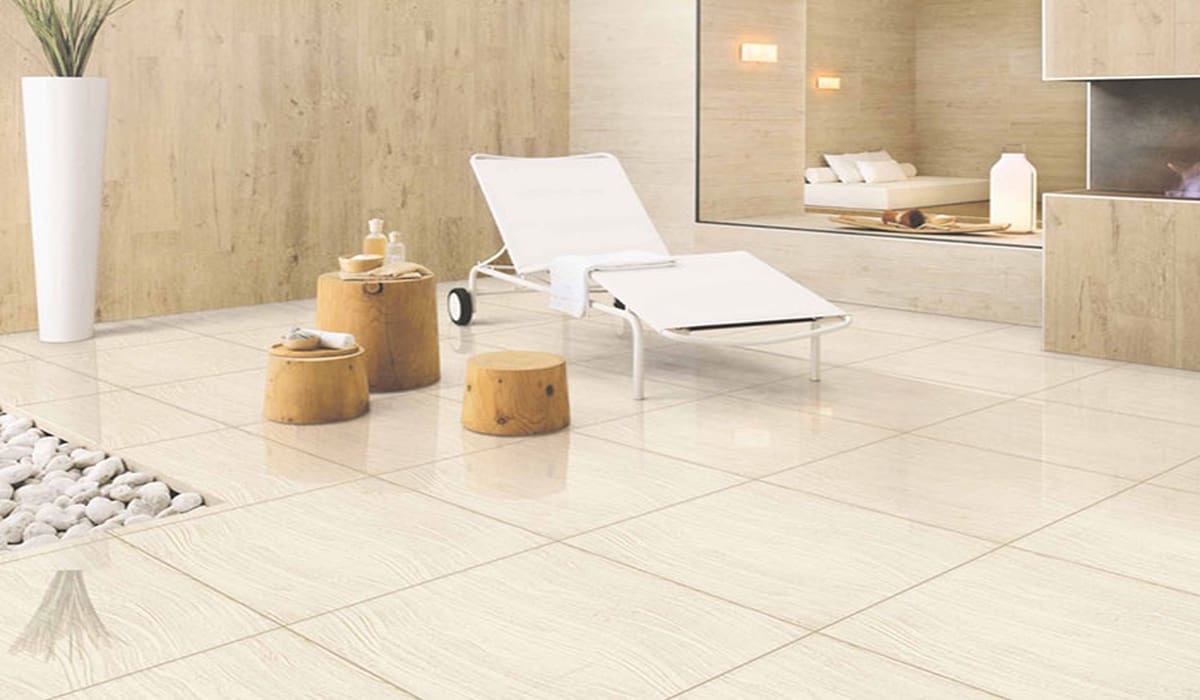Porcelain tiles are a kind of ceramic tiles that are made using the dust press method, whereas vitrified tiles are made using the hydraulic press method. Glazed vs unglazed porcelain tiles are the two different types of porcelain tiles. Ceramic tiles that have been further hardened to improve density, strength, and impermeability are known as porcelain tiles. The process of vitrifying tiles results in the production of vitrified tile , which have a glass-like appearance and are incredibly uniform and long-lasting.
 Ceramic
Ceramic
Both residential and light business environments can benefit from the usage of porcelain tiles. Both residential and commercial spaces can benefit from the usage of vitrified tiles. The options for vitrified tiles include glazed vitrified tiles, whole body vitrified tiles, double charge vitrified tiles, and soluble salt vitrified tiles. Both porcelain and vitrified tiles are strong, long-lasting, scratch-, impact-, acid-, alkali-resistant, water-resistant, and appropriate for use both indoors and outside. Porcelain and vitrified tiles are widely used because of their longevity. The two tiles are quite similar to one another, yet they also differ greatly from one another. Of course, you'll entrust the design to experts while building your ideal home or business. But it's always helpful to have a fundamental knowledge of the field. You can make educated decisions in addition to participating in current events. The sort of tile utilized greatly influences the final design. They enhance the ambiance and highlight the location's inherent beauty. The right tile must be chosen depending on the requirements and use. Your work could be made simpler by knowing your tile and being able to tell them apart in their various sorts. All varieties of natural clay fall under the umbrella of ceramics. It is made of clay together with a number of other minerals and solvents. Ceramics covers a wide range of products, including tableware, dental inlays, fine art, and tiles. Extreme heat, stains, and pressure won't harm them. Fusing sixty percent silica and forty percent clay results in vitrified tiles. They can also be manufactured by heating or setting the mixture at high temperatures to generate a particular sort of ceramic tile. They transform into a consistency like glass as the process continues. Durability, low porosity, scratch resistance, and low maintenance are the traits of vitrified tiles.
Porcelain tile is made from natural materials such as clay that has been finely ground. The tiles are either kept in their original condition or altered to resemble stone, wood, concrete, or other materials after being burnt in a kiln. Porcelain tile is a sort of ceramic tile since it is made of clay; yet, porcelain tile is more durable and long-lasting than other types of ceramic tile. Porcelain tiles come in two varieties: glazed and unglazed. Full-bodied, or unglazed, tiles contain color throughout their whole thickness, making them more durable and chip-resistant than glazed tiles. Consider porcelain tiles vs ceramic tiles when selecting a tile renewal for any floor, wall, or countertop because of its timeless elegance and clean look. Homeowners like its resilience and adaptability, as well as the variety of available aesthetic options. Despite their similarities, there are significant differences between the two types of clay-based tiles, ranging from cost and durability to porosity and absorption. Continue reading to understand the advantages and disadvantages of each so you can determine which is best for your home. Whether you like porcelain or ceramic tiles , we can give you care advice to keep them looking brand-new. Porcelain tile is the most durable version on the market since it is stronger, denser, harder, and less porous than ceramic tile.
In addition, it has a very low absorption rate, making it practically impervious to water damage, even after prolonged contact. This makes it an ideal choice for bathrooms, laundry rooms, patios, and other damp environments. Because porcelain tile can withstand intense activity for lengthy periods, it is an ideal option for floors and worktops. Despite its durability and adaptability, porcelain has two major drawbacks: expense and ease of cutting. Typically, porcelain tile is at least 60% more costly than ceramic tile. Moreover, due to the material's density and tenacity, homeowners frequently need to utilize a wet saw with a diamond blade. Installation by a professional is suggested for a stunning finish with intact tiles. If you're looking for a low-cost DIY installation project, ceramic tile may be your best choice. Porcelain is often tolerant of spills and scratches; it is tough to damage and relatively simple to maintain. Once or twice every week, depending on the amount of foot traffic, sweep and vacuum porcelain tile. Once a month, use a vinegar-and-water solution or a tile-safe commercial cleaner to remove filth and daily accumulation. Mop glazed tile for cleaning. If you have unglazed or textured tile, scrub with a soft-bristle brush instead. Avoid cleaning with oil-based products, waxes, abrasive scrubbers, and anything containing bleach or ammonia. Then, thoroughly dry the item with a towel or microfiber cloth. Consult our porcelain tile cleaning guide for detailed information on how to clean glazed, unglazed, and even textured tiles.
ceramic tiles vs vitrified tiles
The ceramic vs. vitrified tiles comparative assessment may be found on this website. The composition, strength, diversity, applications, and maintenance of ceramic and vitrified tiles are also briefly examined. Vitrified and natural ceramic tiles are the most common types of ceramic. When it comes to choosing between ceramic and vitrified tiles for your renovation, you will be confused by the abundance of terms. There are several varieties of ceramic tiles, but the most popular ones have a coarse texture and an earthy appearance. They consist solely of clay soil and water, which are subsequently molded and cooked at high temperatures. Other composites can expand the range of possibilities. All Ceramic tile flooring , for instance, are simple to install and maintain and are available in a range of colors. Because of its porous nature and propensity to retain water, ceramic tiles are not advised for use in high-humidity areas. Glazing is the most common approach for protecting ceramic tiles against water, stains, and scratches. They are rarely utilized if they are not coated. The finish on these tiles makes them suitable for use on floors, walls, backsplashes, and counters since it provides a durable protective coating. Since they are simple to clean, resistant to water, and less likely to harbor germs, bathrooms and kitchens are the most typical places to use them. The vitrification process makes vitrified tiles tougher and more lasting, as their name suggests. Comparable to ceramic tiles, vitrified tiles are more resilient, less absorbent, and tougher than ceramic tiles. The tiles are more attractive due to their composition of silica, quartz, and feldspar, which gives them a glass-like appearance. Before the fire in the kiln, this compound is applied. Vitrified floor tiles, unlike ceramic floor tiles, have a glassy surface due to the incorporation of glass components during manufacture. In contrast, ceramic tiles use clay far more frequently. Vitrified tiles are durable and low-maintenance, making them ideal for areas with heavy foot activity. Consequently, organizations utilize them regularly. They provide looks comparable to genuine stone at a fraction of the cost and greater durability. Consequently, they are great options for domestic situations. 
porcelain tiles vs vitrified tiles
Two examples of this type of material are porcelain vs vitrified. The water absorption rate of fully vitrified porcelain tile is 0.5 percent or less. Ceramic tiles made using the vitrification process are known as vitrified tiles. The tiles are roasted at high temperatures throughout this procedure. Typically completely vitrified porcelain tiles can be called vitrified. This indicates that porcelain tiles absorb only 0.5% of the moisture present. Then you may inquire about the meanings of the numerous words for tiles. Even vitrified porcelain may transmit sound. Using the presented evidence, you may make the essential distinctions. Vitrified tiles are named after the word "vitrify," which means to produce glass or a similar substance. All tiles produced using the vitrification process are collectively referred to as "vitrified tiles." This tile is popular because of its minimal absorption of water and resistance to stains. The majority of vitrified tiles' composition consists of silica and clay. This mixture yields nonporous tiles with a glassy finish. Despite being a kind of vitrified tile, this term is commonly used to refer to porcelain tiles. These tiles are often constructed of feldspar and clay and may be vitrified, glazed, or unglazed. They are created by crushing a mound of powder. This material absorbs less than 0.5% of its own weight in water. Due to its composition of fine-grained clays and other minerals, porcelain tiles are classed as a form of ceramic tile. Porcelain tiles may be distinguished from other ceramic tiles by their thick composition and high firing temperature. These tiles are produced using the dust-pressed technique. Consequently, the tiling is denser and more durable than conventional ceramic tiling. The grain of this tile has been finalized. A true porcelain tile has a consistent color across its entirety. The aesthetic value of a shattered tile is lessened due to the fact that the same color may be visible via surface fissures. In addition to these options, there are also polished and semi-polished porcelain tiles available. A laborious method is utilized to polish these tiles.  Due to its advantages above typical ceramic tiles, porcelain tiles are around 10 percent more costly. Since ceramic tiles are more resistant to moisture, bathrooms and laundry facilities typically employ them. It also has the benefit of being resilient. This installation of tiles may be tricky. Due to the resilience of the tiles, it takes time and effort to cut out the necessary forms. Call our sales managers to receive more details on the differences between various types of tiles.
Due to its advantages above typical ceramic tiles, porcelain tiles are around 10 percent more costly. Since ceramic tiles are more resistant to moisture, bathrooms and laundry facilities typically employ them. It also has the benefit of being resilient. This installation of tiles may be tricky. Due to the resilience of the tiles, it takes time and effort to cut out the necessary forms. Call our sales managers to receive more details on the differences between various types of tiles.




0
0